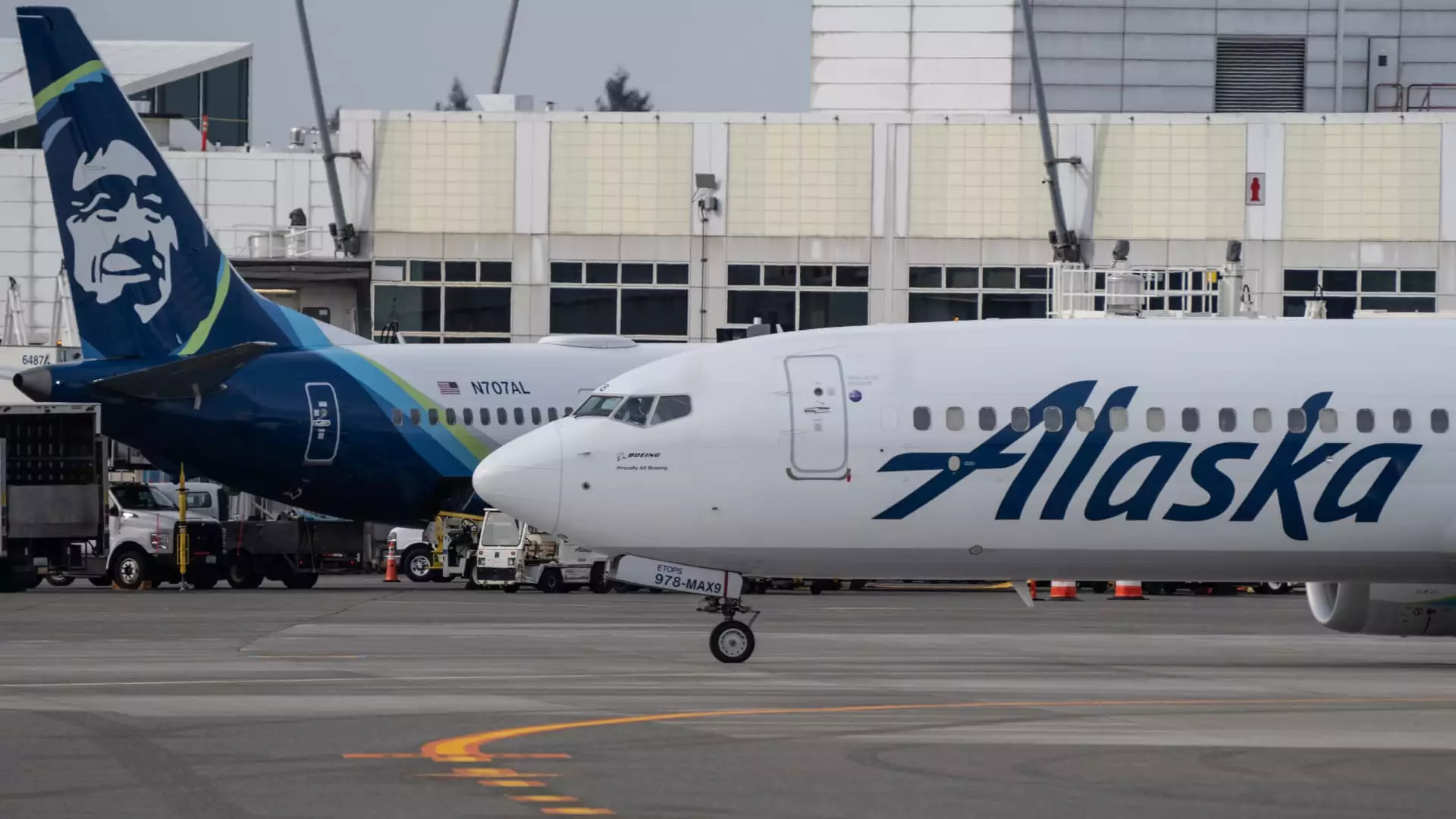Alaska Airlines recently announced their forecast for the second quarter and full-year earnings, which exceeded estimates. Despite facing a first-quarter loss due to a midair blowout incident involving a Boeing 737 Max 9 in January, the airline remains optimistic about the upcoming peak travel season. The incident led to a temporary grounding of the planes by the Federal Aviation Administration and resulted in a $162 million payment from Boeing to Alaska Airlines. The Seattle-based carrier reported a first-quarter loss of $132 million, or $1.05 per share, compared to a net loss of $142 million, or $1.11 per share, in the previous year.
The midair blowout incident involving the Boeing 737 Max 9 has brought additional regulator scrutiny to Boeing and has caused delays in the delivery of new Max planes, of which Alaska Airlines is a major customer. Despite this, Alaska CEO Ben Minicucci expressed support for Boeing during the earnings call but highlighted that Boeing might fall short on its delivery plan to the carrier for the year. The airline remains committed to maintaining a high standard of quality from the manufacturer and has increased its oversight of the 737 production line in response to the incident.
In response to Boeing’s safety crisis, Alaska Airlines is closely monitoring the situation and adjusting its schedules to ensure the continuity of service and reliability for its passengers. Boeing CEO Dave Calhoun’s announcement of stepping down by the end of the year has raised concerns among airline leaders, who have experienced delays due to Boeing’s quality problems. Alaska Airlines is factoring in these delays to provide a schedule that meets the expectations of its guests.
Financial Forecast and Outlook
Alaska Airlines is forecasting adjusted earnings per share between $2.20 and $2.40 for the upcoming period, surpassing the expectations of analysts. Additionally, the carrier anticipates earnings ranging from $3.25 to $5.25 per share for the year 2024, well above the industry average. The positive forecast has led to a 4% increase in Alaska Airlines’ shares, closing at $44.44. Other major airlines like Delta and United have also projected strong travel demand for the year, which is expected to drive positive results during the spring and summer seasons.
Overall, Alaska Airlines remains optimistic about its financial outlook despite the challenges posed by Boeing’s quality issues. The airline’s commitment to maintaining high standards of safety and service for its passengers, along with strategic adjustments to accommodate delays, reflects its dedication to excellence in the aviation industry. As the travel demand continues to rise, Alaska Airlines is well-positioned to capitalize on the opportunities ahead and deliver a superior travel experience for its customers.

